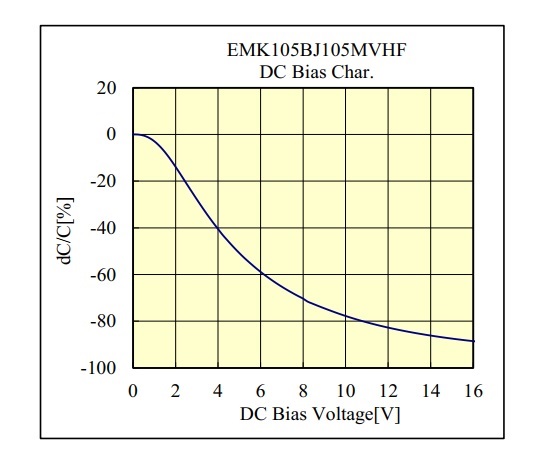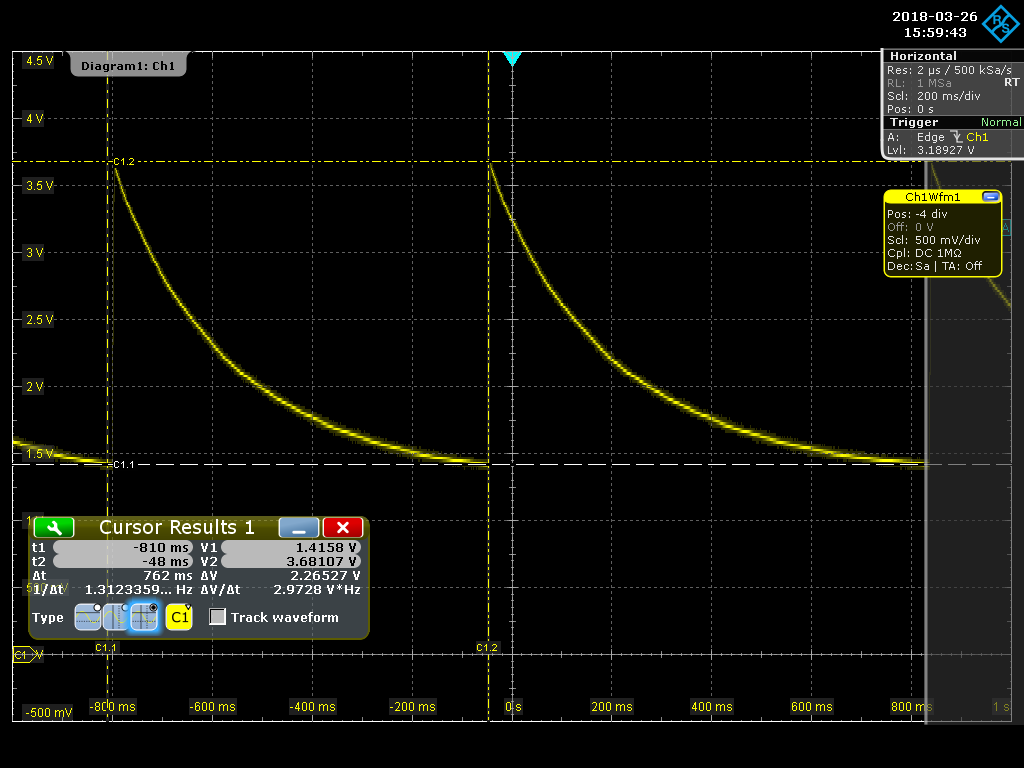Other Parts Discussed in Thread: LM4951
Hi all,
we encountered weird behaviour of the LM4951 amplifier when using an small 0402 ceramic 1uF capacitor as CBypass.
(VDD=7.2V, Cs=1u 50V X7R 0805, Ri=20k, Rf=100k, Rc=1k)
On the Bypass- and the Output Pins a sawtooth-like oscillation with abt. 10 Hz frequency occurred.
The waveform seems to be related to the startup-behaviour of the Amplifiers Anti-Click-and-Pop-Feature.
The oscillation is clearly temperature dependant, it does only occur at elevated temperatures.
Changing the capacitors value to 100 nF increases the Frequency by factor 10, so this is surely related to this Cap.
Short touching the ambient temperated capacitor with a wet finger also leads to that behaviour, but stops when dried again.
When measuring on the Bypass Pin (10:1 10 MegR Probe) an slight Voltage decrease (RC-settling waveform) is observed.
Thus the internal Bypass-Pin source resistance is estimated to abt. 1MegR.
This leads the theory, that the leakage resistance of the Capacitor and Layout causes voltage drop on the Bypass Pin
and triggers kind of Reset/Restart mechanism.
Unfotrunately Literature is quite rare about thermal increase of Leakage-Resistance in small sized ceramic capacitors.
Switching to an 1uF 35V 3526 sized tantalum Cap seems to remove the thermal dependency.
As the unpopulated 0402 Pads still exist on the PCB, this Point is still prone to leakage to flux residue, humidity...
Maybe one pad could be removed with a knive.
Before triggering a rework of 130 fitted PCBs, i'd like to understand the mechanism of this oscillation.
Can somebody, with insight to the intestines of the amplifier, give me a hit, weather my theory is right.
Tantalum Caps are not known to be the best regarding leakage, so i'm struggling to switch blindly to tantalum, although suggested in the datasheet.
I would really like to understand, what's going on here.
Thanks a lot for your suggestions.
Best Regards
Andreas



